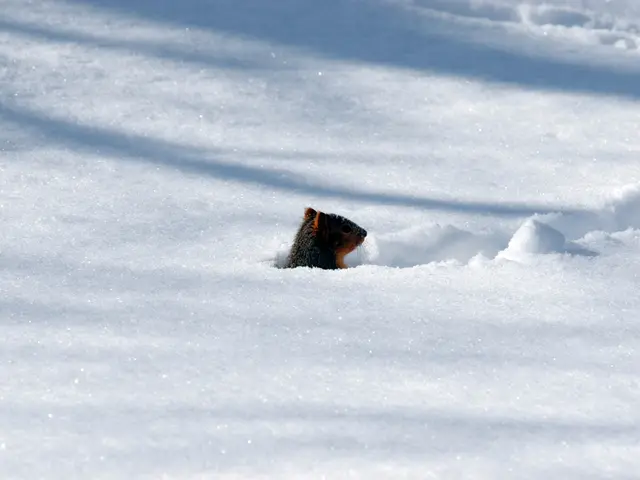European Prehistory: Two Human Species Unearthed in Spain's Past Settlements
Ancient Skull Remains Support Early European Settlement hypothesis
New finds in northern Spain's Sierra de Atapuerca hint at the coexistence of distinct human species, adding intrigue to our understanding of Europe's early settlements. Researchers unveiled well-preserved skulls, dating between 1.1 and 1.4 million years old, associating them with the species Homo affinis erectus.
Published in the journal "Nature", an international research team explains that these findings are reminiscent of - but not definitively attributable to - Homo erectus. The Atapuerca mountains, near Burgos, have seen discoveries of animal remains, hominin fossils, and stone tools dated tens of thousands of years back.
Did Two Human Species Coexist a Million Years Ago on the Iberian Peninsula?
Attributing these remains to the species Homo antecessor are bones previously found near Gran Dolina in Atapuerca, dated to around 1.2 million to 800,000 years ago. This suggests that two separate human species inhabited western Europe around a million years ago, preceding the arrival of the modern Homo sapiens and even the Neanderthals.
While the remains of these two species have been discovered, determining whether they are distinct species and whether they ever represented contemporaneous population can't be clearly established as of now. The process of defining species based on individual, often limited bone fragments is complicated and often contentious.
The Atapuerca site's environment, featuring abundant animal remains - including birds, rodents, ungulates like bisons and hippos, and various plant species - likely supported a larger population at the time.
Early European Tool Users
Simple stone tools and cut marks on animal bones indicate skilled handling of animal carcasses. This suggests that these early Europeans were adept at exploiting the local fauna resources.
Other significant finds include:
- a 1.4 million-year-old skullcap found in the village of Kocabaş, Turkey,
- a 1.4 million-year-old hominin tooth discovered in Barranco León, southern Spain,
- well-preserved stone tools attributed to Homo erectus, dated to approximately 1.4 million years, at Korolevo, Ukraine.
Homo Erectus: Our First Expatriate Human
Homo erectus is recognized as the first human species to leave Africa and is considered a possible direct ancestor of Homo sapiens, having inhabited Africa, Asia, and Europe. The latter emerged in Africa around 300,000 years ago and didn't reach Europe until about 50,000 years ago.
Sources: ntv.de, Walter Willems, dpa | Science - Susan Antón, New York University
Topics:
- Fossil Finds
- Archaeology
- Paleontology
Enrichment Data:
The current understanding of the coexistence between Homo affinis erectus and Homo antecessor in the Iberian Peninsula is limited due to the lack of direct evidence of their simultaneous presence in the region. Key elements regarding these species and their potential overlap include:
Insight of Hominin Species in Europe
- Homo erectus: This species migrated out of Africa around 2 million years ago and inhabited parts of Europe. There is no concrete evidence of their presence in the Iberian Peninsula during the same time frame as Homo antecessor.
- Homo antecessor: This species is well-documented in the Iberian Peninsula, with significant discoveries at sites like Gran Dolina in Atapuerca, Spain. Homo antecessor is dated to around 1.2 million to 800,000 years ago. It is considered a potential ancestor of both Neanderthals and modern humans.
- The publication in "Nature" suggests that the fossil remains found in Spain's Sierra de Atapuerca may be associated with the ancestor of Homo erectus, Homo affinis erectus, indicating the possibility of two human species, Homo affinis erectus and Homo antecessor, coexisting a million years ago in Europe.
- The coexistence of these two species during a million years ago in the Iberian Peninsula, as suggested by the fossil findings, precedes the arrival of modern Homo sapiens and even Neanderthals.
- The climate and abundant resources, including animals and plant species, in the Atapuerca site might have facilitated the coexistence of these two early human species, enabling a larger population to thrive.




